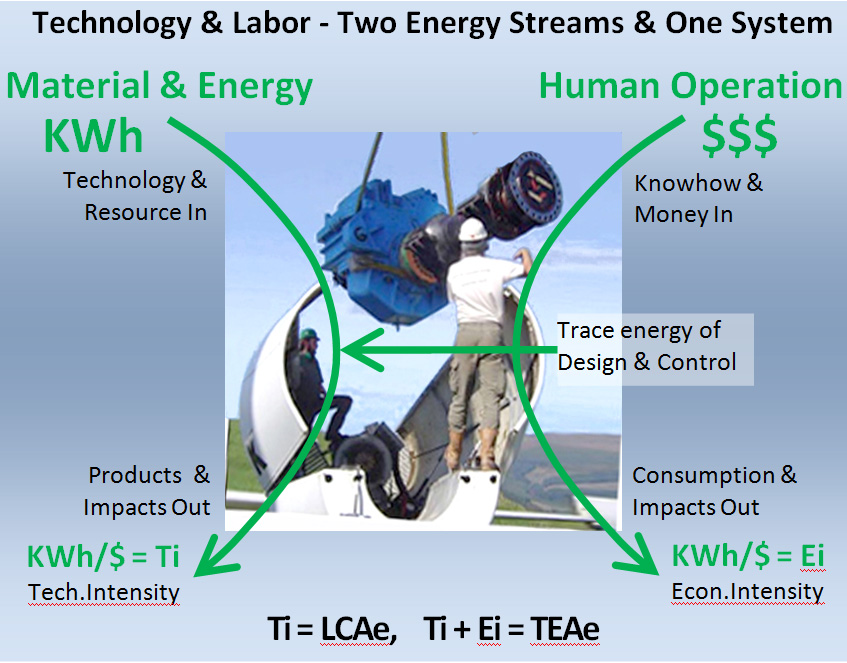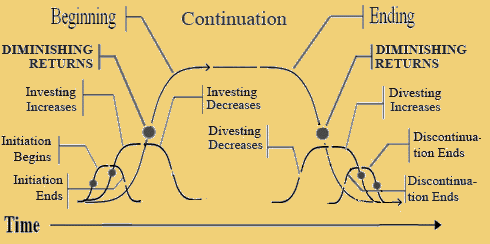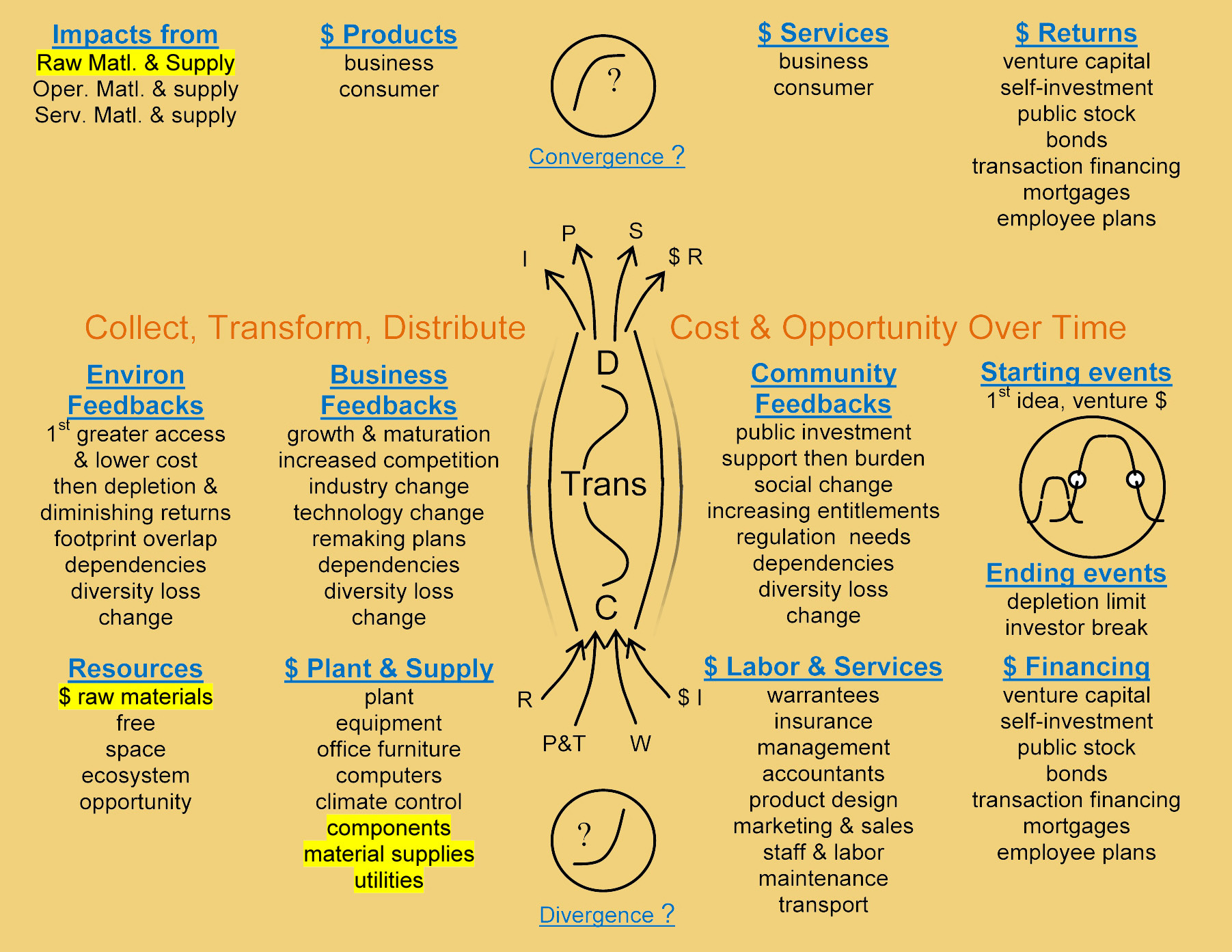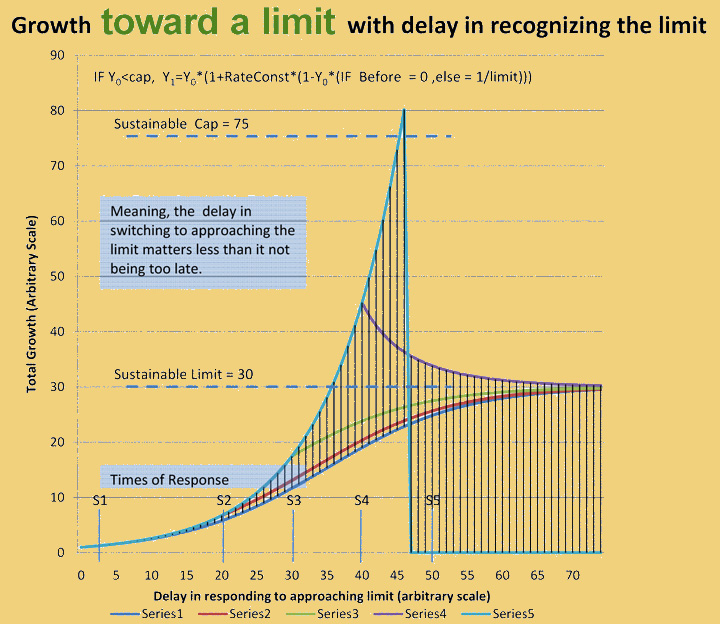
For EROI you access both and combine them for every working part of the business system, to the point of sale.
TEA
is a method of identifying and assessing the behavior and effects of whole complex environmental systems. To define complex systems as subjects of natural science requires look for what environmental networks work as a whole. That defines boundaries others can independently locate for making physical measurements and demonstrates what complex behaviors nature is using to do things simply. For economic impacts one starting point is realizing that we pay for all the impacts we cause,... so then "follow the money" turns out to work and also give you a way to "follow the energy". Together they work to help expose what things have to work together for money to let you determine remote physical processes and have their effects. "Follow the energy" traces nature's "universal resource" as "follow the money" traces the universal resource for making economic choices, each one largely serving the role of the single resource that can replace any other.Once you find boundaries it locates the networks which work as wholes, and tags the functions and roles that point to what information you are missing. Curiously... information models don't tell you what information they are missing, only causal models do that. Constructing whole system measures then requires a technique of "exhaustive search" as a way to define what to aggregate in your measure. The big step is realizing that you'll need a reliable way to measure what is individually unaccountable, like what some other person does with the money you give them. You need to know find if the thread leads to a "fat tail" of impacts or a "thin tail", and just accept "average" until you know better. That's where comparing results for "adding up the parts" (bottom-up) and "dividing up the whole" (top-down) accounting, helps show you what's still unaccounted for. It becomes a powerful tool for discovering how nature is evidently adding up the totals in ways we'd just never expect...
Current technical application papers:
Locating impact boundaries within systems involves understanding the spread of effects that either dissipate or multiply. That may vary as natural systems either grow, and so multiply local effects, or climax when the environment begins to respond by providing resistance and cause local effects to dissipate instead. The difference is not a matter of what the small changes directly “cause”, exactly, but in how the environment responds.
A major uncertainty for LCA is estimating the ‘true’ boundaries of these impacts, including estimating their micro-economic and macro-economic rebound effects. LCA measures presently do not include an assessment of these known types of impacts that are not individually accountable because they depend on environmental responses beyond view. The most immediate one is that LCA does not yet included the impacts of providing the information and services to operate product delivery technology, the impacts of the human technology that runs things. It also omits the rebound effect of improving efficiencies on one thing promoting the growth of impacts for others. The hazard is that overlooking the category of environmental response impacts gives clients misinformation about ‘the impact’ of their decisions.
The need, then, is to search for answerable aspects of these questions while acknowledging the unanswerable ones. The “accountable” environmental response impacts start with ones that can be estimated statistically. For example, energy is traded globally and so tends to trade at a single price. All products also compete to minimize energy use and, if you count human services, have especially wide distributions of kinds of embodied inputs. That implies most spending has average energy impact, and the global energy intensity of GDP is a good starting point for the boundary of energy impacts of individual expenditures. That becomes highly informative as a basis for estimate refinement. It helps indicate how much the direct accounting methods leave uncounted, as the implied global share of all impacts is often very different from the observed local measure of direct impacts.
The session would be about just framing these kinds of whole system models. What you get is TEA (Total Environmental Assessment) , a first step toward accessing the impacts of human services as well as of creating or relieving bottlenecks in the larger economy with spreading secondary effects. Doing this requires both a strategy and a way of linking embodied impacts for different kinds of measures (some way to add ‘apples’ and ‘oranges’) so each metric can retain its independent definition, connect to others, and all improve the measure of the whole.
10/01/09 TEA talk prepared 12 slide presentation notes on some slides below
\Related Resources
1 - HDS 4D Sustainability
cycle of community systems learning and response design w/
misc. resources and templates
2 - Whole system measures,- Why Money = Energy and Total Balance concepts, notes and references on using whole system measures
3 - Why Efficiency Multiplies Consumption - presentation to BioPhysical Econ 09
4 - The Art of Observation - note with misc. systems thinking resource links
 |
The resources that
drive technology are separate from the resources that drive people, and
so you estimate them separately and add them together. For EROI you access both and combine them for every working part of the business system, to the point of sale. |
 |
Features of whole system development phases and networks, how to distinguish natural systems from mental theories. Recognizing their processes and stages of development, creating mental "place marks" or "cubby holes" for things beyond one's understanding that can not be taking place in one's mind. | |
 |
Networks of common whole distributed system relationships that develop and subside as their animated parts explore their choices. | |
 |
Learning and Response time lags and their effects, for raising questions about development phase and future system response characteristics | |
jlh